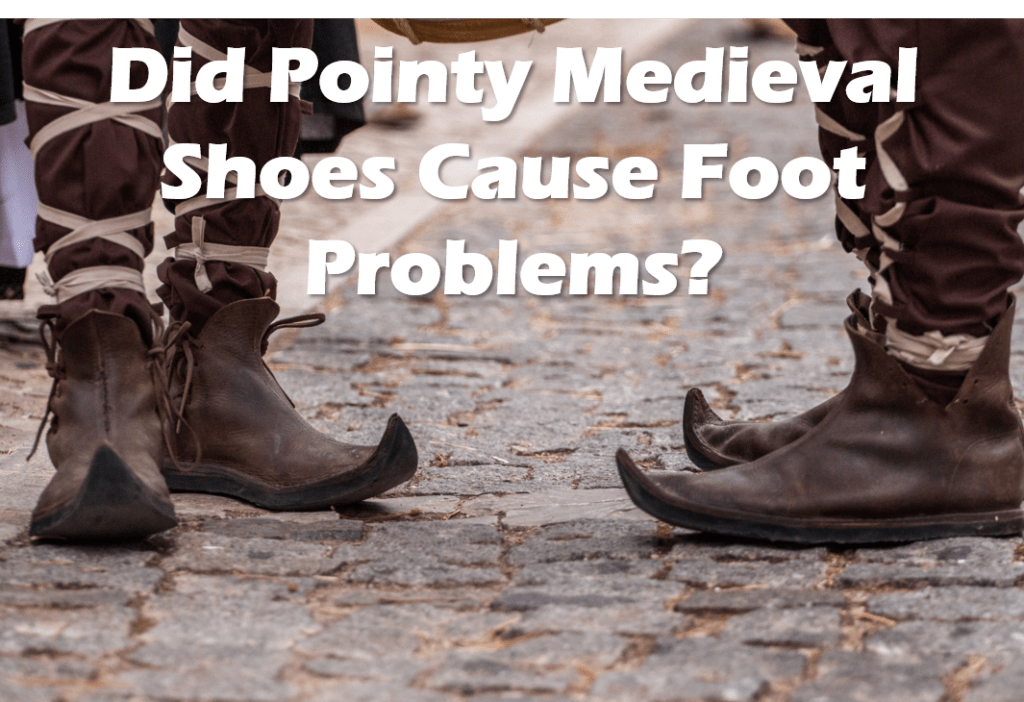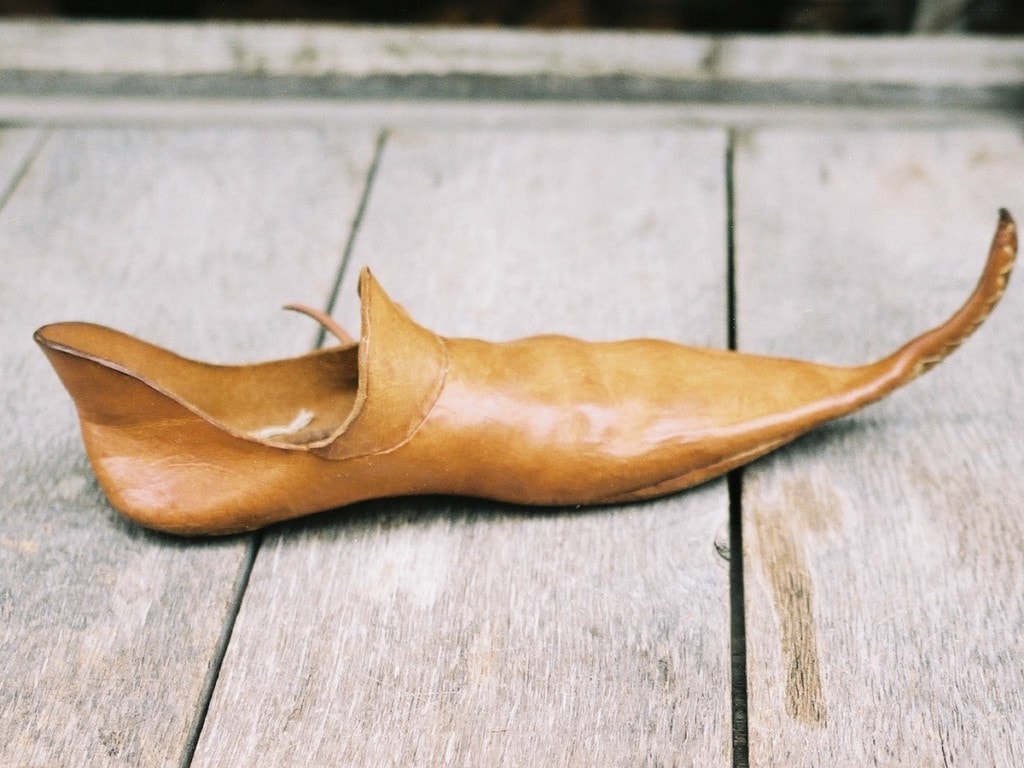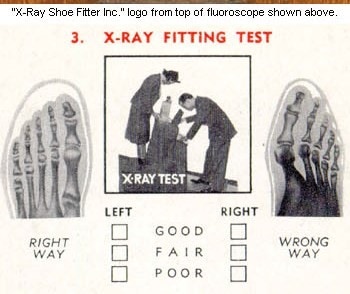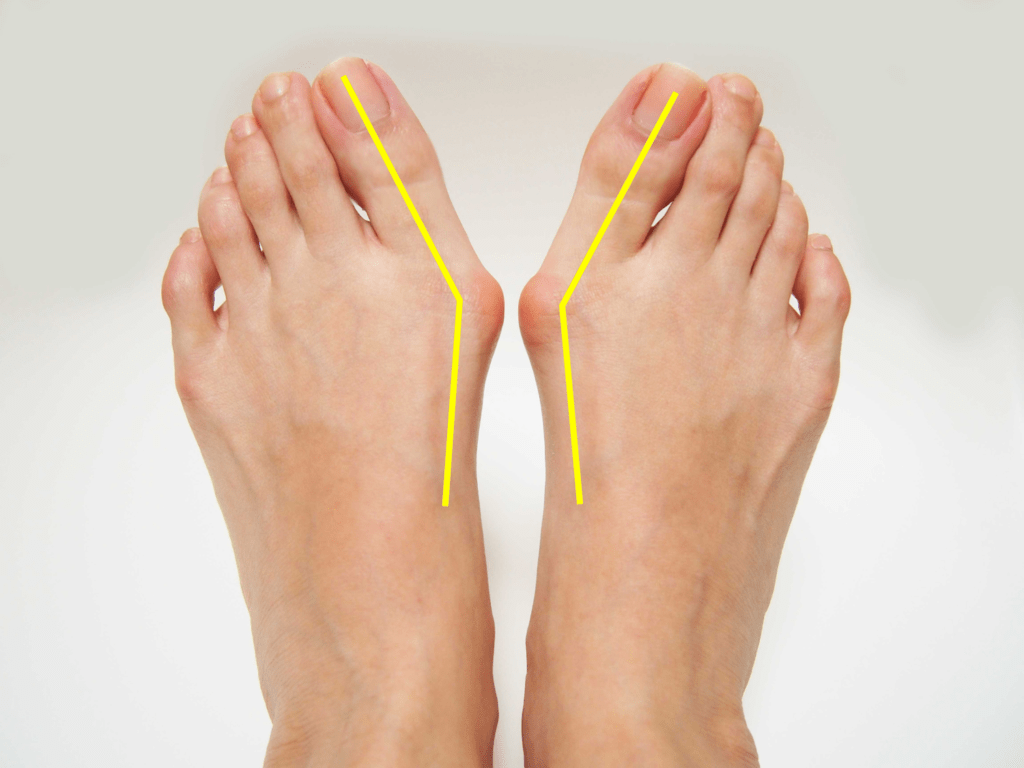A Medieval Fashion Trend that Caused Bunions Can Teach Us about Hallux Valgus

Credit Mario Rodrigues/Shutterstock
Medieval fashions were a bit strange at times. One of them involved crazy pointy-toed shoes for men. However, this had a significant impact on Medieval toes that we can still see in cemetery studies today. All of that can teach us about Hallux Valgus. Let’s dig in.
Pointy Toed Shoes
These pointy men’s shoes were called Poulaines and looked like this:

They became longer and even more curved over time. However, this had the effect of shoving the toes in together much like some women’s shoes do today:

The image above is from a time in history where x-rays were used in shoe stores. That was before we had any idea that too much x-ray energy could cause problems. However, this was useful in seeing if the person’s toes were all bunched up at the end.
What is Hallux Valgus?

In Latin, hallux means toe and valgus means side bent toward the inside. This is a common problem among women due to wearing high heels and pointy shoes. It can also happen if you have a foot that supinates too much (heels that wear too much on the outside). This leads to arthritis at the big toe joint (1st MTP). That protruding bulge on the inside that we all call a “bunion” is in fact, a big bone spur that comes from the abnormal pressure on the two joints at that spot.
To learn more about this problem and what to do about it, watch my video below:
Poulaines and Hallux Valgus
A recent interesting discovery happened when scientists at Cambridge began studying skeletons found in local graveyards as part of a bigger project called “After the Plague“. They analyzed 177 skeletons from local city cemeteries and only 6% of those buried between the 11th and 13th centuries had Hallux Valgus. At the time, people wore practical footwear with rounded toe boxes to match their feet. However, shoe styles changed significantly in the 14th Century to elongated and pointy Poulaines. Hence, about 27% of 14th and 15th Century skeletons found in Cambridge cemeteries had Hallux Valgus. These deformities were found mostly in people over the age of 45, suggesting that the cool shoes of youth had consequences as people aged. Almost all of the 14th Century shoes found in Cambridge and London graves were at least slightly pointed.
This fashion trend became so out of hand that the king needed to get involved. Edward IV passed a law in 1463 limiting the length of the toe box of the shoe to no longer than two inches.
Can Hallux Valgus be Treated?
As shown in the video above, there are simple solutions to Hallux Valgus. If those don’t work, many people result in bunionectomy surgery where bone and ligaments are removed creating a permanently floppy toe. To avoid that fate, we have used precise image-guided procedures where the patient’s own platelet-rich plasma or bone marrow concentrate are used to help the joint. In fact, I just had my big toe joint injected this past Thursday. I have thankfully avoided wearing any Poulaines!
The upshot? Our medieval ancestors had similar “slave to fashion” problems as modern women. Pointy shoes and high heels cause Hallux Valgus, a painful big toe condition. So take care of your feet, lest you be part of some future study about how silly 21-century women wore pointy shoes with heels!

NOTE: This blog post provides general information to help the reader better understand regenerative medicine, musculoskeletal health, and related subjects. All content provided in this blog, website, or any linked materials, including text, graphics, images, patient profiles, outcomes, and information, are not intended and should not be considered or used as a substitute for medical advice, diagnosis, or treatment. Please always consult with a professional and certified healthcare provider to discuss if a treatment is right for you.
